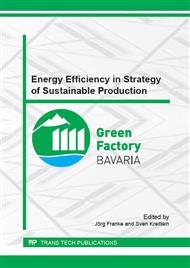p.162
p.171
p.180
p.187
p.196
p.205
p.213
p.223
p.231
Energy Efficiency Analysis of Vapor Phase Soldering Technology through Exergy-Based Metric
Abstract:
In electronics production, the condensation based soldering technologies are known for reproducible solder profiles and efficient heat transfer methodology. The recent advancements in lead-free soldering and requirements for absolute void-free interconnections to increase the reliability and lifetime of the product needs optimization of the soldering process. The vacuum assisted vapor phase soldering process addresses the requirements with respect to mass production and parallelly resource efficient production which is also the motivation for the present work. This study is devoted to quantify the resource consumption and qualify this consumption through exergy flows in a vacuum vapor phase reflow soldering technology in electronics manufacturing.The analysis implies on the saving potential for energy consumption specifically during the vacuum process which also defines the void reduction quality of solder joints. Exergy efficiency analysis of a temperature profile depicts the influence of the materials used in the demonstrator. Shortening the production lead‑time, and increasing the production rate increase the efficiency of exergy and prevents wastage of usable energy. Furthermore, the set-up improvements for the temperature profiles processes are necessary, and the changes toward developing new, transformational technologies in pre-heating and vacuum zones are mandatory if a high efficiency of resources used is aimed.
Info:
Periodical:
Pages:
196-204
Citation:
Online since:
November 2015
Authors:
Price:
Сopyright:
© 2015 Trans Tech Publications Ltd. All Rights Reserved
Share:
Citation:


